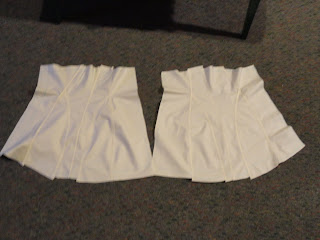The Place of Fabrics: Silk
Everyone is aware that silk is a fine fabric. However, I believe that it was worn by a slightly broader section of society than it is generally represented as. Lady's maids received cast-off clothes from their mistresses, and even other servants and the lower middle classes could afford second-hand silk clothing. Women could be scorned for dressing above their station if their silk clothes were deemed too fine, however. Some types of silk I have come across in advertisements: Taffeta/taffety, lustring/lute-string, alamode ("a sort of silk or taffety"), bridges, Granado, Naples, organzine, pole, satin, sarcenet, syper, Bengal. (NB: I've also gone through and reformatted the other fabrics posts, so that they (mostly) link to the quoted page, and the quote is a picture of the page rather than a retyped version.)
